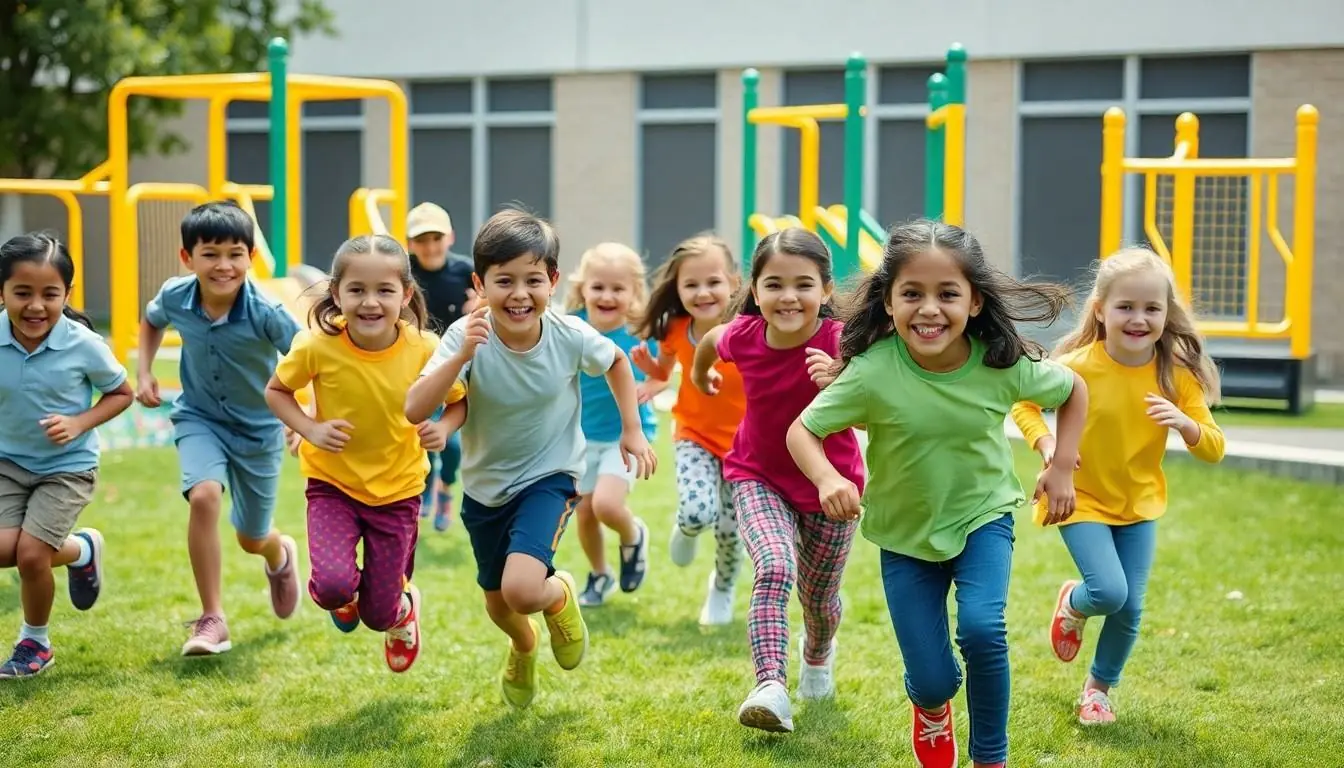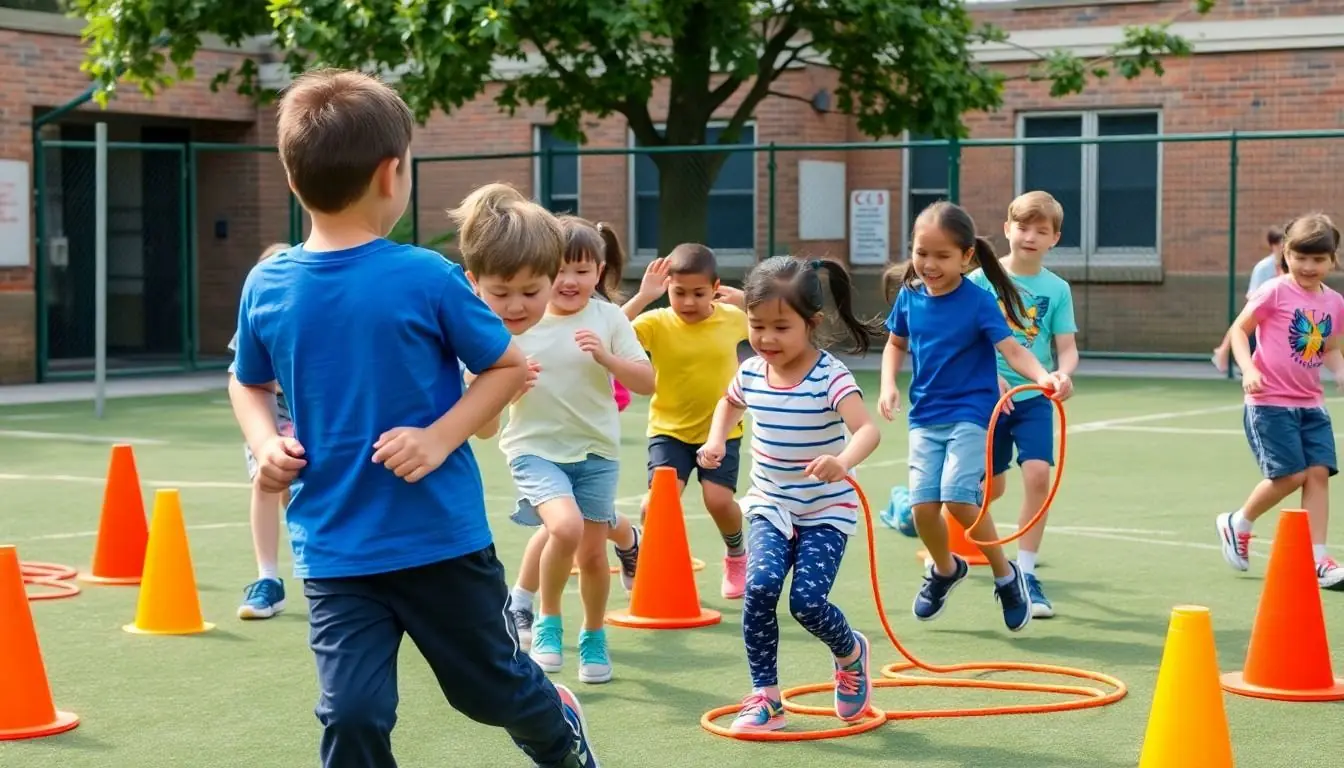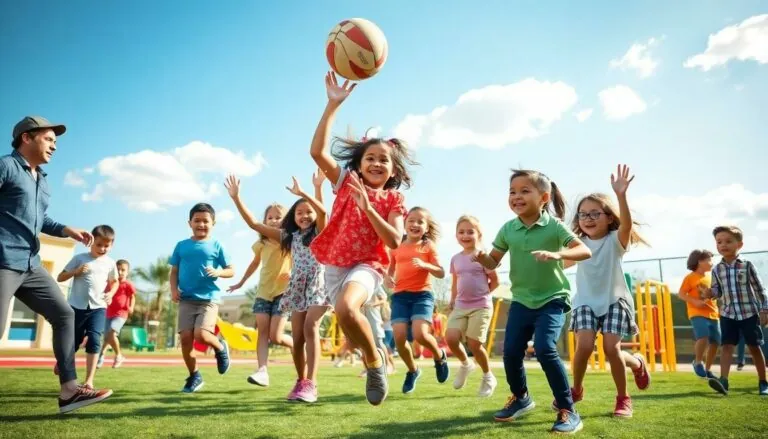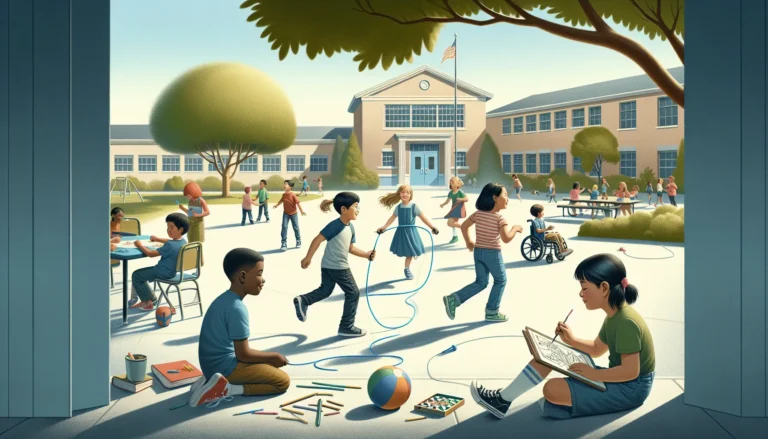Imagine a world where kids leap, bound, and giggle their way through gym class instead of dragging their feet. Dynamic Physical Education for Elementary School Children by Robert P. Pangrazi transforms the traditional approach to physical education into an exciting adventure. This isn’t just about dodging balls; it’s about fostering a love for movement that sticks with kids for life.
Table of Contents
ToggleOverview of Dynamic Physical Education
Dynamic Physical Education for Elementary School Children by Robert P. Pangrazi emphasizes the necessity of creating engaging physical education curricula that resonate with young learners. This approach transforms standard gym classes into experiences that foster enthusiasm and participation.
Developing fundamental movement skills tops the priority list, as these skills form the basis for participating in various sports and physical activities. Through diverse activities, children enhance coordination, balance, and agility, laying a strong foundation for lifelong fitness.
Incorporating fun and interactive elements captures students’ attention and encourages them to be active participants. Creative games and cooperative challenges facilitate teamwork and social interaction, boosting children’s confidence and self-esteem.
Benefit from age-appropriate lessons that adapt to children’s developmental stages. Carefully designed physical education plans address the range of abilities seen in elementary school classrooms. When educators meet children where they are, they nurture a positive attitude towards physical activity.
Pangrazi’s work also stresses the impact of health education in relation to physical movement. Teaching about overall wellness, proper nutrition, and the value of being active supports children’s understanding of healthy living.
Sensory-rich environments further enrich the learning experience. Classrooms equipped with a variety of tools and resources encourage exploration and creativity in movement. As children engage with their surroundings, they discover new ways to enjoy physical activity.
Ultimately, dynamic physical education prioritizes fun, engagement, and lifelong skills, fostering a culture that values movement and wellness from a young age.
Key Concepts from Robert P. Pangrazi
Robert P. Pangrazi’s work underscores the significance of engaging physical education in elementary schools. His approach aims to foster a lasting passion for movement among children through dynamic activities.
Importance of Physical Education
Physical education plays a crucial role in the overall development of children. Engaging in regular physical activity promotes health and supports academic success. Students with a strong physical education foundation demonstrate improved focus and better classroom behavior. Schools that prioritize physical education create a well-rounded learning environment that promotes social interaction and teamwork skills. This emphasis on movement not only benefits children’s physical health but also enhances emotional well-being through positive experiences.
Developmental Benefits for Children
Developmental benefits arise from participating in dynamic physical education. Children improve their coordination, balance, and agility through diverse movement activities. These fundamental movement skills establish a foundation for more complex sports and physical pursuits. Moreover, engaging in physical activities cultivates self-esteem and confidence as children achieve new skills. Age-appropriate lessons foster a love for movement, catering to various developmental stages. Children exposed to dynamic physical education develop essential lifelong habits that contribute to their overall wellness.
Curriculum Structure
Dynamic Physical Education for Elementary School Children emphasizes a well-structured curriculum that is engaging and developmentally appropriate. Such a curriculum fosters enthusiasm and lifelong health habits.
Lesson Planning
Effective lesson planning is crucial for creating an engaging environment. Each lesson incorporates age-appropriate objectives, focusing on fundamental movement skills. Teachers design lessons to encourage active participation while ensuring they’re achievable. Themes may revolve around teamwork or coordination to keep students interested. Incorporating various teaching strategies also aids in addressing different learning styles. Regular assessments help educators adapt lessons as needed, ensuring all students progress and stay motivated.
Activities and Games
Engaging activities and games form the heart of dynamic physical education. These elements allow children to develop motor skills in enjoyable ways. Incorporating cooperative games fosters teamwork, as students learn to communicate while having fun. Fun, movement-based challenges, such as obstacle courses, stimulate creativity. Additionally, games that emphasize inclusion encourage participation from all skill levels. Integrating themes related to health and wellness enhances understanding of lifestyle choices. Regular rotation of activities keeps lessons fresh and exciting, capturing students’ attention throughout the school year.
Teaching Strategies
Dynamic physical education relies on effective teaching strategies to engage young learners and promote a love for movement. By focusing on inclusion and engagement, educators create an enriching environment that benefits all students.
Engagement Techniques
Active participation is essential for keeping children motivated in physical education. Incorporating movement-based games stimulates excitement and interest in fitness. Different activities, such as relay races or obstacle courses, encourage teamwork while developing essential motor skills. Tailoring lessons to significant themes, like health or fitness challenges, ensures children remain intrigued and invested in their progress. Providing variety through themed units often captivates students, making learning both enjoyable and effective.
Inclusion Practices
Inclusion serves as a cornerstone of dynamic physical education. Adapting activities to accommodate diverse skill levels allows every child to participate, fostering confidence and connection. Utilizing peer support encourages collaboration while promoting social skills. Differentiating tasks ensures that all students feel included, regardless of physical ability or experience. Prioritizing cooperative games nurtures an inclusive environment where every child can thrive. Implementing accessible resources and modifying equipment enhances participation opportunities for all.
Assessment and Evaluation
Assessment in dynamic physical education focuses on measuring children’s physical development and providing constructive feedback. Both aspects contribute significantly to their growth and enjoyment of movement.
Measuring Physical Development
Measuring physical development involves assessing children’s progress in fundamental movement skills. Teachers can use various tools, such as standardized tests, to evaluate coordination, balance, and agility. Tracking these skills helps educators identify individual strengths and areas for improvement. Observational assessments during activities offer valuable insights into children’s engagement levels and skill mastery. Data collected enhances lesson planning, ensuring activities remain developmentally appropriate and fun for all students.
Feedback Methods
Effective feedback methods play a crucial role in dynamic physical education. Immediate, specific feedback encourages children to improve their technique and builds confidence. Coaches can use verbal praise, positive reinforcement, and constructive criticism to keep students motivated. Peer feedback is also beneficial, promoting social interaction and collaboration among classmates. Incorporating self-assessment enables children to reflect on their performance and set personal goals. Utilizing varied feedback styles helps cater to different learning preferences, fostering a supportive environment for all.
Conclusion
Dynamic physical education is essential for fostering a love of movement in elementary school children. Robert P. Pangrazi’s approach transforms traditional gym classes into engaging experiences that prioritize fun and participation. By focusing on fundamental movement skills and incorporating diverse activities, children develop not only their physical abilities but also their social skills and self-esteem.
The emphasis on age-appropriate lessons and inclusive practices ensures that all children can thrive in a supportive environment. As schools adopt these dynamic curricula, they pave the way for healthier lifestyles and improved academic performance. Ultimately, dynamic physical education cultivates a culture of wellness that benefits children well beyond their school years.





